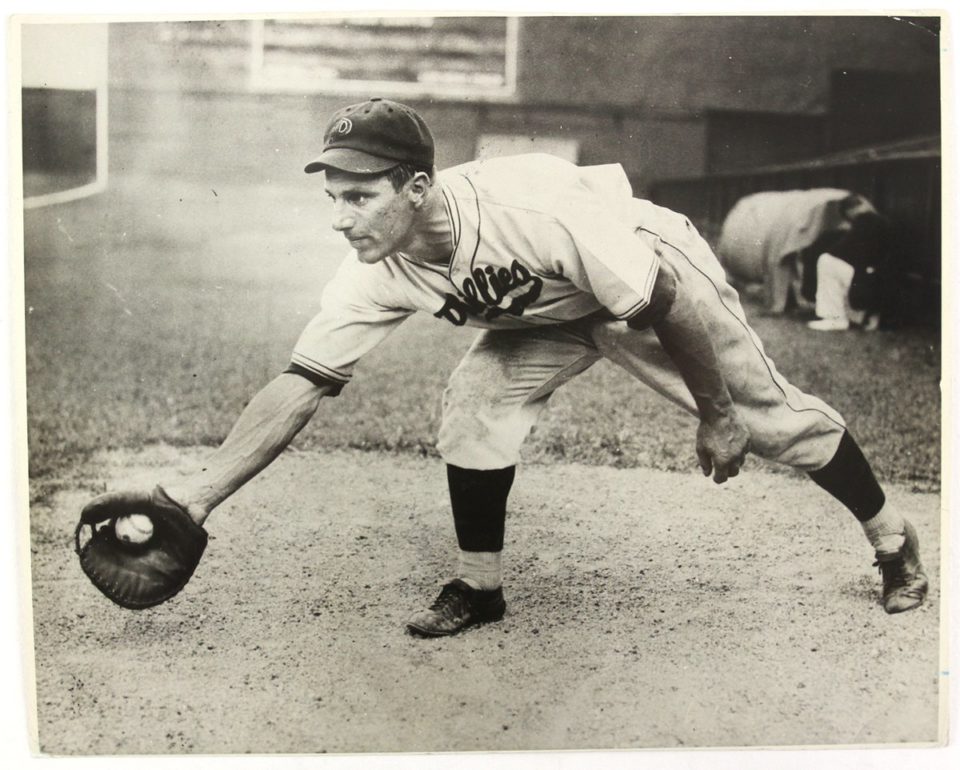Baseball History Comes Alive Now Ranked #2 by Feedspot Among All Internet Baseball History Websites and Blogs!
Guest Submissions from Our Readers Always Welcome!
Don Camilli Photo Gallery
Click on any image below to see photos in full size and to start Photo Gallery:
- rocher and Dolph Camilli (Leslie Jones collection)
- Dolph Camilli, Dodger Leo Durocher, Lyn Lary
- Newspaper coverage of Dolph Camilli’s death
- Dolph Camilli in the minor leagues in the Pacific Coast League
- Dolph Camilli, Billy Herman, PeeWee Reese, Arky Vaughan
- Dodgers Billy Herman, Pete Reiser, Dolph Camilli, Dixie walker
- Dolph Camilli
- Dolph Camilli
- Dolph Camilli
- Dolph Camilli
- Pennant from Brooklyn’s 1941 season
Second Edition of “Baseball’s Forgotten Stars: Dolph Camilli
“Dolph Camilli was a quiet, gentle man but he was as strong as an ox. Nobody knew how well Dolph could fight because, quite frankly, nobody had ever wanted to find out” –Dodger Manager Leo Durocher
With such a favorable response to my recent post on forgotten star Wally Berger, I’ve decided to go ahead with a second installment!
Thanks to our reader Peter Mason for suggesting Dolph Camilli. He’s the prototype of players for in this series: forgotten stars who were good-but-not great and are long overdue for a little recognition. So let’s shine the spotlight on Dolph Camilli for a brief moment!
Dolph Camilli Autographed baseballs on Amazon
Dolph Camilli had an eight-year minor league career before making his major league debut with the Cubs at the end of the 1933 season at age 26. The San Francisco native played 12 seasons in the majors (1933-’45) with the Cubs (1933), Phillies (1934-37), Dodgers (1938-’43), and Red Sox (1945). Over his career, the two-time All-Star hit .277 with 1482 hits, 261 doubles, 936 runs, 239 home runs, 950 RBIs, a remarkable .388 on-base percentage, and .492 slugging average. His 135 OPS+ places him well above average among his contemporaries (100 being average).
In each year from 1935 to 1937, he hit 25 or more home runs. In 1937, he hit a career high .339 and led the league in on-base percentage (.446). After his trade to the Dodgers in 1938, he hit over 100 RBIs in four of the next five seasons. He was the ninth National Leaguer to hit 200 home runs
Camilli’s free-swinging style led him to lead the league in strike-outs four times. In 1939, he became the first player to have three 100-strikeout seasons. To show how much the game has changed, his league-leading strike-out totals of 94, 113, 107, and 115 pale in comparison with what we see in today’s game.
Dolph Camilli’s best year was his 1941 MVP year when he hit .285 and led the league in both home runs (34) and RBIs (120), as the Dodgers won their first National League pennant since 1920. The following year, 1942, the 5’10” left-hander finished second in the league in home runs and RBIs, breaking Zack Wheat‘s Dodger club record of 131 career home runs, later surpassed by Gil Hodges. After a trade to the Dodgers’ hated rivals, the Giants in July1943, Camilli refused to report and instead managed the Oakland Oaks for the next two seasons. He joined the Boston Red Sox in mid-1945, batting .212 with two home runs in his last season.
For those of us who, of course, never saw him play, Baseball-Reference’s “Similarity Scores” feature is extremely useful. It gives us the context needed to evaluate him, allowing us to compare him with players we’ve seen. Camilli’s stats compare similarly with players David Justice, J.D. Drew, Justin Morneau, Andre Thorton, and Ryan Klesko. He also compares similarly with old-timers Larry Doby and Hal Trotsky. Using these players as our gauge, we can say for certain that Camilli was a fine ball player and deserves recognition.
Following his playing career, Camilli managed in the Pacific Coast League, winning a pennant with Spokane in 1948. He later was a scout for the Yankees and Angels, and a spring training instructor for the Angels. His son Doug was a major leaguer catcher in the 1960s. His brother Frank was a boxer who died of cerebral hemorrhaging after a bout with Max Baer in 1930.
Dolph Camilli passed away in San Mateo, California on October 21, 1997 at age 90. He was inducted into the Dodgers’ Hall of Fame in 1984
Gary Livacari
Photo Credits: All from Google search
Information: Excerpts edited from the Dolph Camilli Wikipedia page.
Subscribe to my blog for automatic updates and Free Bonus Reports: “Memorable World Series Moments” and “Gary’s Handy Dandy World Series Reference Guide.”













